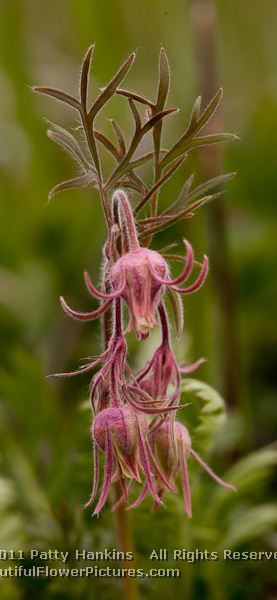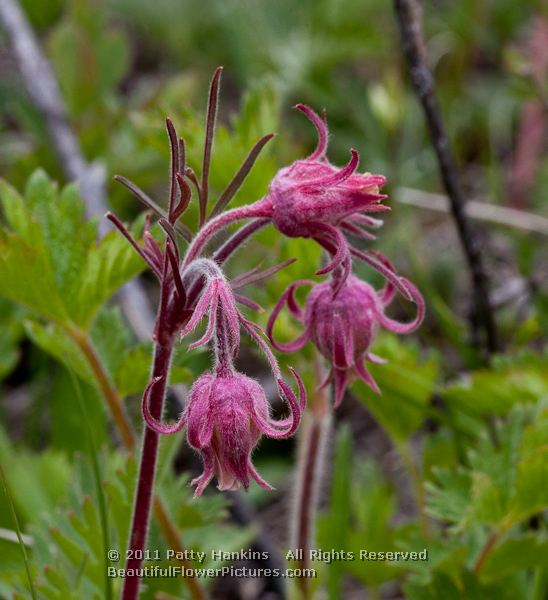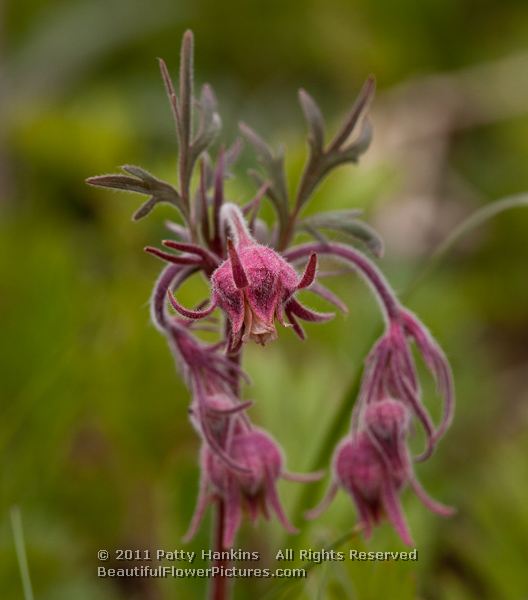by hankinslawrenceimages | Nov 28, 2011 | Flowers, Montana, North Dakota, Photo Locations, South Dakota, Wildflowers, Wyoming
Several people have asked me how I was able to identify all the different wildflowers I photographed on my trip west – especially since this was my first time seeing all these wildflowers. The answer is actually pretty straight forward – I bought several reference books before I headed west – and bought a few more while I was in the various parks. I’ve found that by searching amazon for the state or park name and wildflowers I can usually come up with at least some basic reference books before I visit a new area. And then I always visit park bookstores and other local bookstores to see what else I can find. I literally have a shelf full of wildflower identification books – and I’m always looking to add new ones to my collection.

Here’s what I added to my collection as a result of my trip west – and I’m sure I’ll add a few more next year . . . (links go to the books on Amazon – they are provided for your convenience – they’re not affiliate links).
Common Plants of Theodore Roosevelt National Park – Robert L. Sisk and Jan Tysdal-Sisk – includes grasses, trees, shrubs and exotic plants in addition to the native wildflowers. I bought it at the park – and it’s the best guide I found for that area.
Common Wildflowers of Grand Teton National Park – Charles Craighead – a handy little book I bought at Grand Teton. It is an official guidebook of Grand Teton National Park. There are several books in the series including Day Hikes and Short Walks of Grand Teton National Park, Wildlife of Grand Teton National Park and History of Grand Teton National Park. There may be others in the series – these are the ones I brought home with me. These books aren’t available on Amazon – you can order them directly from the Grand Teton Association website.
Tallgrass Prairie Wildflowers – Doug Ladd and Frank Oberle – includes wildflowers of the Prairie Midwest – so east of the parks I visited on this trip. It covers from eastern Manitoba – south to northeastern Oklahoma – east to western Tennessee and north to western Ohio. It’s my first book on wildflowers of this region – now I just need some parks to go visit so I can start finding these wildflowers to photograph.
Wildflowers of Glacier National Park and Surrounding Areas – Shannon Fitzpatrick Kimball and Peter Lesica – my favorite book for the wildflowers I found in Glacier National Park. The flowers are organized by color – which always makes it easier for me to identify wildflowers I find and have no clue what family they belong to.
Wildflowers of Grand Teton and Yellowstone National Parks – Richard J. Shaw – my favorite book for Grand Teton and Yellowstone. Organized by color, has the most common wildflowers and nice and light so easy to toss into my backpack.
Wildflowers of Montana – Donald Anthony Schiemann – includes 350 wildflowers in the mountains, plans and forests of Montana
Wildflowers of the Western Plains – Zoe Merriman Kirkpatrick – includes 186 species native to the western plains stretching from western Texas and eastern New Mexico in the south to Canada in the north.
Wildflowers of Wyoming – Diantha and Jack States – I got my copy for about $ 20 – no clue why the only copy listed on Amazon is on sale for over $ 900!!! It’s a good book – but I’m sure you can find a more reasonably priced copy elsewhere on the web is it’s still this overpriced on Amazon.
Since I’m planning on heading back to these areas again next year – do you have a favorite wildflower guide for the region that I should add to my collection before I go? If you know of any – please let me know. Thanks 🙂

by hankinslawrenceimages | Oct 24, 2011 | Flowers, Photo Locations, Wildflowers, Wyoming
I had an absolutely fantastic time photographing wildflowers at Grand Teton National Park in June. I photographed enough different wildflowers that I share an entire blog post full of just pink and purple wildflowers from just one park!
Fairyslipper or Calypso Orchid – Calypso bulbosa – what can I say – I found one!!!! If you’ve followed my blog for a while, you know I love the native orchids – so you can just imagine how pleased I was to find this Fairyslipper orchid
 © 2011 Patty Hankins
© 2011 Patty Hankins
Few-flowered Shooting Stars – Dodecatheon pulchellum – related to the Shooting Stars I’ve photographed in North Carolina and Tennessee.
 © 2011 Patty Hankins
© 2011 Patty Hankins
Spring Beauty – Claytonia lancelolata – related to the Spring Beauty (Claytonia caroliniana) I photographed in Tennessee.
 © 2011 Patty Hankins
© 2011 Patty Hankins
Smallflowered Woodlandstar – Lithopharagma parviflorum – I loved the way these delicate flowers appeared to dance in the wind
 © 2011 Patty Hankins
© 2011 Patty Hankins
Low Larkspur – Delphinium nutallianum – a relative of the Dwarf Larkspur (Delphinium tricorne) I photographed along the Blue Ridge Parkway.
 © 2011 Patty Hankins
© 2011 Patty Hankins
And finally Ballhead Waterleaf – Hydrophyllum capitatum – one of the first wildflowers to bloom each year at Grand Teton National Park.
 © 2011 Patty Hankins
© 2011 Patty Hankins
With all the wonderful wildflowers I found at Grand Teton National Park in June it should come as no surprise to anyone – I’m already planning my next trip to Grand Teton. I’m hoping to be there for several days in July 2012!
by hankinslawrenceimages | Oct 12, 2011 | Flowers, Photo Locations, Wildflowers, Wyoming
My original plans for my June 2011 trip west only had me visiting Yellowstone and Glacier National Parks. Enough people kept asking me if I was going to the Grand Teton National Park – that I finally added a few days in Grand Teton to my itinerary. I’m so glad I did – Grand Teton National Park was probably my favorite park that I visited!!!! And to think – I hadn’t originally planned on going there.
What I loved about Grand Teton was the amazing views of the mountains. From almost anywhere in the park, I had incredible views of gorgeous mountains. It did make driving a bit of a challenge – I wasn’t the only driver who was getting distracted by the beautiful scenery! The view of the barn along Mormon Row with the mountains in the background was one of my favorite scenes in the park. And being a photographer – of course I had to photograph the barn – just like so many thousands (millions, maybe?) of photographers before me have.
 © 2011 Patty Hankins
© 2011 Patty Hankins
The wildlife in Grand Teton was also pretty amazing. I saw my first wild moose there. I got caught in several moose jams at Grand Teton (a traffic jam caused by a moose) – but I didn’t mind. The moose were incredible to see. On one of my hikes I saw four different mother and baby moose! The babies were so cute. If you ever see a mother and baby moose in the wild – be sure to keep your distance – mother moose can be as dangerous if not more dangerous than a mother bear protecting her young.
 © 2011 Patty Hankins
© 2011 Patty Hankins
My favorite part of Grand Teton National Park was the wildflowers!!!!! I found and photographed more types of wildflowers at Grand Teton than I did anywhere else on my trip. The park was enough further south and lower in elevation than Yellowstone that instead of feet of snow – I was much more likely to find patches of wildflowers!!!!
Yellow Bells or Yellow Fritillary – Fritillaria pudica – are a member of the Lily family.

© 2011 Patty Hankins
Glacier Lily – Erythronium grandiflorum – is another native lily
 © 2011 Patty Hankins
© 2011 Patty Hankins
Nuttall Violets – Viola nuttallii – were the only members of the viola family I photographed on my trip.
 © 2011 Patty Hankins
© 2011 Patty Hankins
I’ll be posting my photos of the pink & purple wildflowers from Grand Teton in a few days. In the meantime, I hope you’ve enjoyed these photos from Grand Teton National Park.
by hankinslawrenceimages | Oct 5, 2011 | Flowers, Wildflowers, Wyoming
One of the big surprises of my trip west in June was how challenging it was for me to find wildflowers. After all, it was June – they should be all over the place right! Well not really – it was a long winter so there was still lots of snow on the ground when I arrived in Yellowstone National Park in early June. I spent my first several days at Yellowstone exploring the southern and eastern parts of the park. While the geysers, lakes and river canyons were wonderful – I was getting frustrated by the lack of wildflowers.
Later in the trip, I visited the northern areas in the park – and it was in the Lamar Valley that I found lots of wildflowers. While talking with one of the park rangers about my challenge finding wildflowers – she very nicely explained about the Yellowstone Caldera – which is where all the volcanic and thermal activity in the park takes place. And that one of the characteristics of the caldera region is not great soil condition for wildflowers. So now I know – if I want to photograph wildflowers at Yellowstone – I’m more likely to find them in the non-Caldera region. And I did find some wonderful wildflowers in the Lamar Valley region of Yellowstone National Park!
Here are some of the wildflowers I photographed at Yellowstone National Park.
Arrowleaf Balsamroot – Balsamoriza sagittata – a member of the sunflower family
 © 2011 Patty Hankins
© 2011 Patty Hankins
Meadow Death Camas – Zaigadenus venenosus – a member of the Lily family – and yes – all parts of the plant are poisonous.
 © 2011 Patty Hankins
© 2011 Patty Hankins
Glacier Lilies – Erythronium grandiflorum – another member of the Lily family
 © 2011 Patty Hankins
© 2011 Patty Hankins
Prairie Smoke – Geum triflorum – a member of the rose family
 © 2011 Patty Hankins
© 2011 Patty Hankins
Sugar Bowl – Clematis hirsutissima – a member of the Buttercup family

© 2011 Patty Hankins
Mountain Forget-Me-Not – Myosotis alpestris – a member of the Borage family
 © 2011 Patty Hankins
© 2011 Patty Hankins
Phlox – possibly Rocky Mountain Phlox – Phlox multifloral
 © 2011 Patty Hankins
© 2011 Patty Hankins
I’m thinking about heading back to Yellowstone next summer – and if I do – I’ll definitely plan on spending most of my time in the northern sections of the park.
by hankinslawrenceimages | Oct 3, 2011 | Photo Locations, Wyoming
Talk about a big OOOPPPS!!!! I just realized that I’ve never posted most of my photos from my trip west this summer. These are the photos I edited while on the road to share what I was seeing. So they’ve been posted to Facebook and Twitter – but I never shared them here on my blog. I posted the set from Custer State Park and intended to share the others ones shortly after that and never got around to it. So here’s the first set from Yellowstone National Park – photos from Grand Teton National Park, Glacier National Park and Theodore Roosevelt National Park will be coming soon.
What can I say about Yellowstone National Park that hasn’t already been said? It was incredible. The scenery was amazing. The wildlife was everywhere. And there even some wildflowers. Not as many as I expected – there was still an awful lot of snow at Yellowstone when I was there in June.
My stay at Yellowstone was in two parts – during the first few days of my visit I spent time photographing the landscapes and some wildlife, primarily in the areas of the park with all the geysars and other thermal activity. Here are the photos from that part of the trip.
I spent a few nights at the Old Faithful Lodge which gave me some great opportunities to photograph the Old Faithful Geyser. Since it was right by my hotel, I could choose the time of day and light I wanted to photograph it in. Here’s Old Faithful in the wonderful late afternoon light.
 © 2011 Patty Hankins
© 2011 Patty Hankins
West Thumb Lake is one of the large lakes in the park. Most of it was still frozen when I was there in June – I’ll admit I was surprised to still see so much snow and ice in the park. In places, the snow was still piled higher than my SUV!
 © 2011 Patty Hankins
© 2011 Patty Hankins
Throughout this part of my trip I photographed lots of thermal activity. From geysers to thermal pools, there was always something different to photograph. I particularly liked the way the minerals from the thermal activity created patterns and colorful shapes on the ground. Here are some of the mineral deposits by the edge of West Thumb Lake.
 © 2011 Patty Hankins
© 2011 Patty Hankins
One of the biggest surprises for me was the Grand Canyon of the Yellowstone River. Having visited Grand Canyon National Park last year, I knew what a river could create by wearing away at the rock over time. I just didn’t expect to see anything like that at Yellowstone. I loved this view of the Grand Canyon of the Yellowstone River.
 © 2011 Patty Hankins
© 2011 Patty Hankins
In addition to the incredible landscapes at Yellowstone National Park – there was the wildlife. As most of you know – I don’t do much wildlife photography. It’s not my strength – and really I’d rather just watch the wildlife in it’s natural environment rather than miss seeing it because I’m spending time and effort trying to photograph it. However I did take a few wildlife shots in Yellowstone.
Throughout the park, there are wonderful herds of bison. Here’s a herd relaxing in a field.
 © 2011 Patty Hankins
© 2011 Patty Hankins
Here’s one of the Elk from the Lamar Valley
 © 2011 Patty Hankins
© 2011 Patty Hankins
And finally – a tree swallow. I’m very proud of this photo. Photographing birds is so not my strong point! I have more bad photos of birds, places where birds used to be, birds flying out of the photo, etc than I care to admit. With lots of advice from Dan Williams (my favorite bird photographer) I finally studied a bird’s behavior, realized what spot the bird kept returning to – and set up my camera and tripod focused on that spot. So when the sparrow returned to his favorite landing spot – I was in place and ready to take my photo!!!!
 © 2011 Patty Hankins
© 2011 Patty Hankins
I hope you’ve enjoyed some of my landscape and wildlife photos from Yellowstone National Park. I’ll post some of my wildflowers photos from the park soon.
by hankinslawrenceimages | Sep 21, 2011 | Flowers, Photo Locations, Uncategorized, Wildflowers, Wyoming

© 2011 Patty Hankins
One of my favorite wildflowers I discovered my trip to Yellowstone National Park in June was Prairie Smoke (Geum Triflorum). When I first spotted it – I had no clue what it was – but I knew I wanted to take lots of photographs of it. I couldn’t remember ever seeing a wildflower with the combination of uniquely shaped flowers, fuzzy texture and fascinating leaf structure that reminded me of antlers.
 © 2011 Patty Hankins
© 2011 Patty Hankins
Prairie Smoke, also known as Old Man’s Whiskers and Purple Avens, is a member of the Rose family. Native to much of the Northern and Western United States and Canada, this wonderful wildflower grows to about 18″ tall. It is easily identified by it’s bell shaped fuzzy reddish-purple flowers. After pollination, the flowers turn upward to aid dispersal of the seeds. The flowers are less than 3/4″ wide. The leaves are up to 7″ long and divided into multiple tooted segments.
 © 2011 Patty Hankins
© 2011 Patty Hankins
Prairie Smoke grows easily in many different ecosystems. It can adapt to dry, moist or wet soil – sun, partial shade or full shade. It is often found growing in open woods, mountain meadows and grassland prairies.
 © 2011 Patty Hankins
© 2011 Patty Hankins
Many Native American tribes used Prairie Smoke for medicinal purposes. It was used to treat wounds and coughs. An infusion of the roots was often used to treat sore eyes. It was often given to horses as a stimulant before a race. and the seeds were used to create purfume.

© 2011 Patty Hankins
Prairie Smoke can be grown from seeds or from a division of the rhizome. For the rhizome method of propogation the plants should be split and planted in early spring. Seeds should be collected in late summer, stored for the winter, and then planted in the spring.
More information about Prairie Smoke can be found online at
Burke Museum of Natural History & Culture
Kemper Center for Home Gardening
Lady Bird Johnson Wildflower Center
Michigan Natural Features Inventory
Native American Ethnobotany
Native Plant Network
USDA Germplasm Resources Information Network
USDA Plant Profiles































